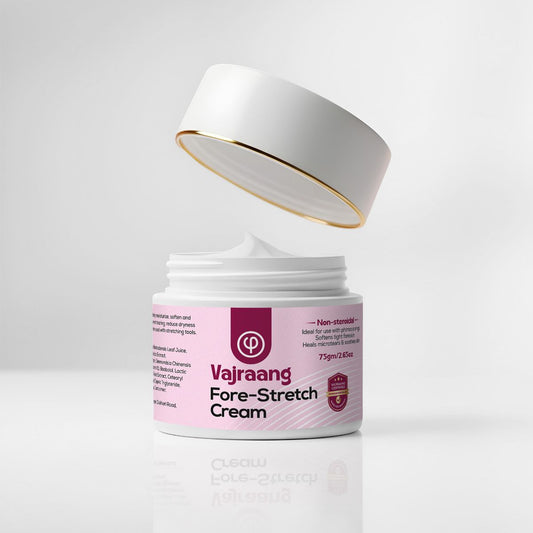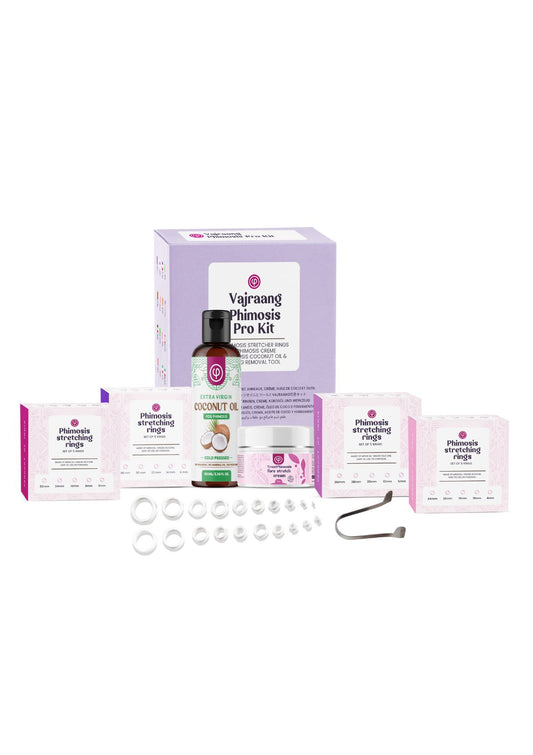When treating phimosis, many focus solely on the phimotic band, often overlooking the frenulum—a vital band of tissue under the penis that connects the foreskin to the glans. A tight frenulum (frenulum breve) can hinder foreskin mobility, leading to pain, tearing, and incomplete results. Addressing the frenulum alongside phimosis stretching is critical for achieving full foreskin functionality. Here’s why and how to include the frenulum in your treatment plan effectively.
What is the Frenulum and Why Does It Matter?
The frenulum plays a key role in foreskin movement. However, when tight, it can:
• Restrict Retraction: Even after the phimotic band is stretched, retraction may remain incomplete.
• Cause Pain: Especially during erections or sexual activity, a tight frenulum can pull on the glans.
• Lead to Tears: Tearing in the frenulum area increases discomfort and delays recovery.
Without addressing the frenulum, phimosis treatment remains incomplete. Learn more about common pitfalls in treatment by reading Preventing Paraphimosis and Tears During Phimosis Treatment.
Signs of a Tight Frenulum
You may have frenulum breve if you notice:
1. Difficulty with Retraction: Even after stretching the phimotic band, the foreskin doesn’t fully retract.
2. Pain During Erections: A tight frenulum pulls the glans downward, causing discomfort.
3. Visible Tension: The frenulum stretches taut or bends the glans during retraction.
4. Recurring Tears: Frequent injuries in the same area during activity or stretching.
How the Frenulum Affects Phimosis Treatment
Ignoring the frenulum can significantly limit progress:
• Plateaus in Recovery: Foreskin flexibility improves, but full retraction remains restricted.
• Risk of Injury: Stretching the phimotic band without addressing the frenulum can lead to tears.
• Ineffective Tools: Devices like Vajraang Phimosis Stretching Rings may not achieve optimal results if the frenulum isn’t addressed.
For a detailed guide on effective stretching, visit How to Use Vajraang Phimosis Stretching Rings for Treating Phimosis.
Safe Methods for Stretching the Frenulum
1. Gentle Manual Stretching
• How to Perform: Hold the frenulum gently and apply light outward pressure for 20–30 seconds. Repeat several times daily.
• Pro Tip: Avoid forcing the stretch to prevent tears or scarring.
2. Use Lubrication
• What to Use: Apply a natural lubricant like Vajraang Extra Virgin Coconut Oil to reduce friction and enhance comfort.
• Why It Helps: Lubrication prevents microtears during daily activities or intimacy.
3. Warm Water Therapy
• How to Perform: Soak in a warm bath or shower, gently retracting the foreskin under flowing water for 5–10 minutes. This softens the tissue, making it more pliable.
4. Combine with Phimosis Stretching Rings
• How It Works: Use Vajraang Phimosis Stretching Rings to stretch the phimotic band while gently stretching the frenulum beforehand.
• Benefit: As the foreskin retracts with each larger ring size, the frenulum naturally stretches as well.
When to Seek Medical Advice
If frenulum stretching doesn’t yield improvement, consult a doctor if you experience:
• Persistent pain despite gentle stretching.
• Recurring tears that don’t heal or reappear frequently.
• No progress over several months.
For severe cases, procedures like frenuloplasty can permanently lengthen the frenulum, offering effective relief. To understand when medical intervention is necessary, read When to Seek Medical Advice for Phimosis.
Why Addressing the Frenulum is Essential
Treating phimosis without addressing the frenulum can lead to:
• Incomplete Recovery: Discomfort and restricted mobility persist.
• Recurring Injuries: Tears in the frenulum slow overall progress.
By including frenulum stretching in your plan, you ensure harmonious foreskin movement and pain-free functionality. Explore additional recovery tips in Lifestyle Changes and Practices to Enhance Phimosis Recovery.
Final Thoughts
The frenulum is as critical as the phimotic band in resolving phimosis. Gentle stretching, proper lubrication, and tools like the Vajraang Phimosis Stretching Rings are essential for effective treatment. Consistency, patience, and attentiveness to your body’s signals will lead to lasting comfort and full foreskin functionality.
Your journey to a fully functional foreskin starts here. Stay consistent, stay gentle, and success is within reach.





